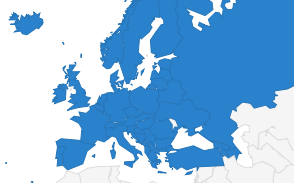Ukraine: Local media in economy mode

The results of a survey from the National Union of Journalists of Ukraine (NUJU), “Frontline Local Media Report”, shed light on the difficulties encountered by print local media outlets in the country since February 2022. The report aims to help media outlets in need to restart their journalistic work for public interest.
A total of 30 local newspapers were surveyed about their journalistic work in times of Russian occupation and the restart of newsroom work after the liberation of the occupied territories.
The survey found that the average length of forced stoppage due to the Russian occupation was six months.
Among the main issues faced by the newspapers are financial and supply chain issues, power cuts, lack of human resources and technical tools. Financial instability is the most important issue: 94% of local newspapers reported having insufficient funding. The inability to publish or publish at the same rate as before leads to a lack of information accessible for citizens. Social media therefore became the primary source of information, subjecting readers to fake news and propaganda.
When restarting the publications, the vast majority of local newspapers decreased the number of issues by two to four times. The number of the pages on average decreased by 50%, except for one publication.
In 80% of the cases, the editorial staff decreased, in 25% of the cases to one or two people: a lot of journalists moved either abroad or to other regions of Ukraine. Logistics became an issue, since the post did not work well in the liberated territories. The newspaper Maiak, for instance, distributed its issues for free among the population. Its slogan was “read yourself and pass it on”.
Lack of technical resources was also an issue local newspapers were dealing with. Power cuts due to Russian attacks on critical infrastructure is a major problem in Ukraine. Therefore, power banks and generators are necessary equipment for journalists in order to do their job. Laptops are also needed: some journalists had to resort to writing articles on their phones. Around a third of respondents say the equipment they have only allows them the publication of the print issues in part.
Local newspapers in de-occupied zones on average lost 63% of their revenues. Nearly half of the media outlets lost as much as 80% of the revenues. 80% of the newspapers have funds sufficient to only survive one to three months.
Many of the responders also believe they would need training on how to write projects in order to gain financial help.
Financial, material, technical and educational help are the main ways to support Ukrainian local media outlets. Six solidarity centers for journalists are already active in Ukraine. They were put up by NUJU with the help of the European Federation of Journalists (EFJ), the International Federation of Journalists (IFJ) and Unesco. A safety fund for Ukrainian journalists was created. Donors can help by clicking here.











